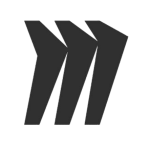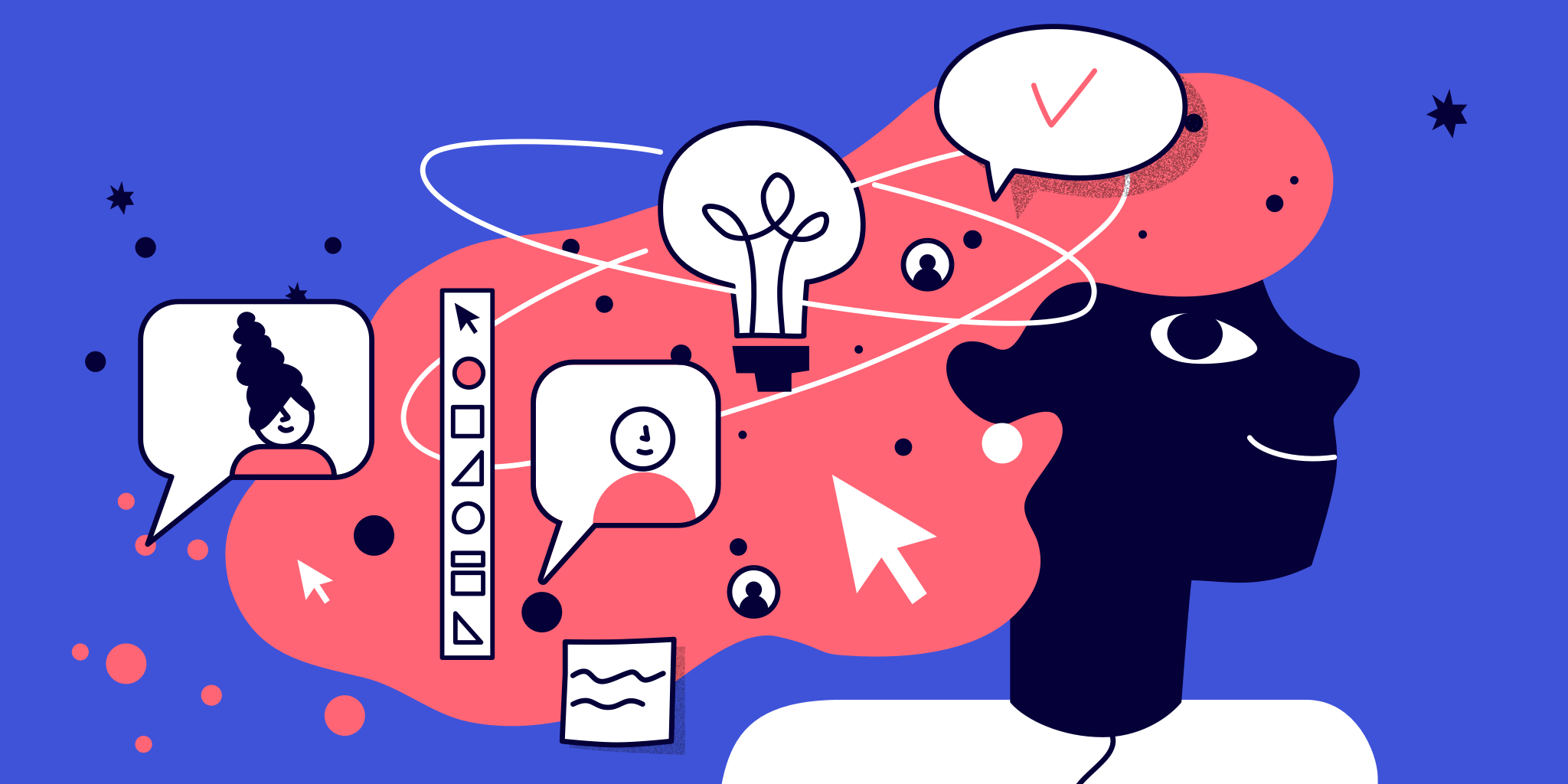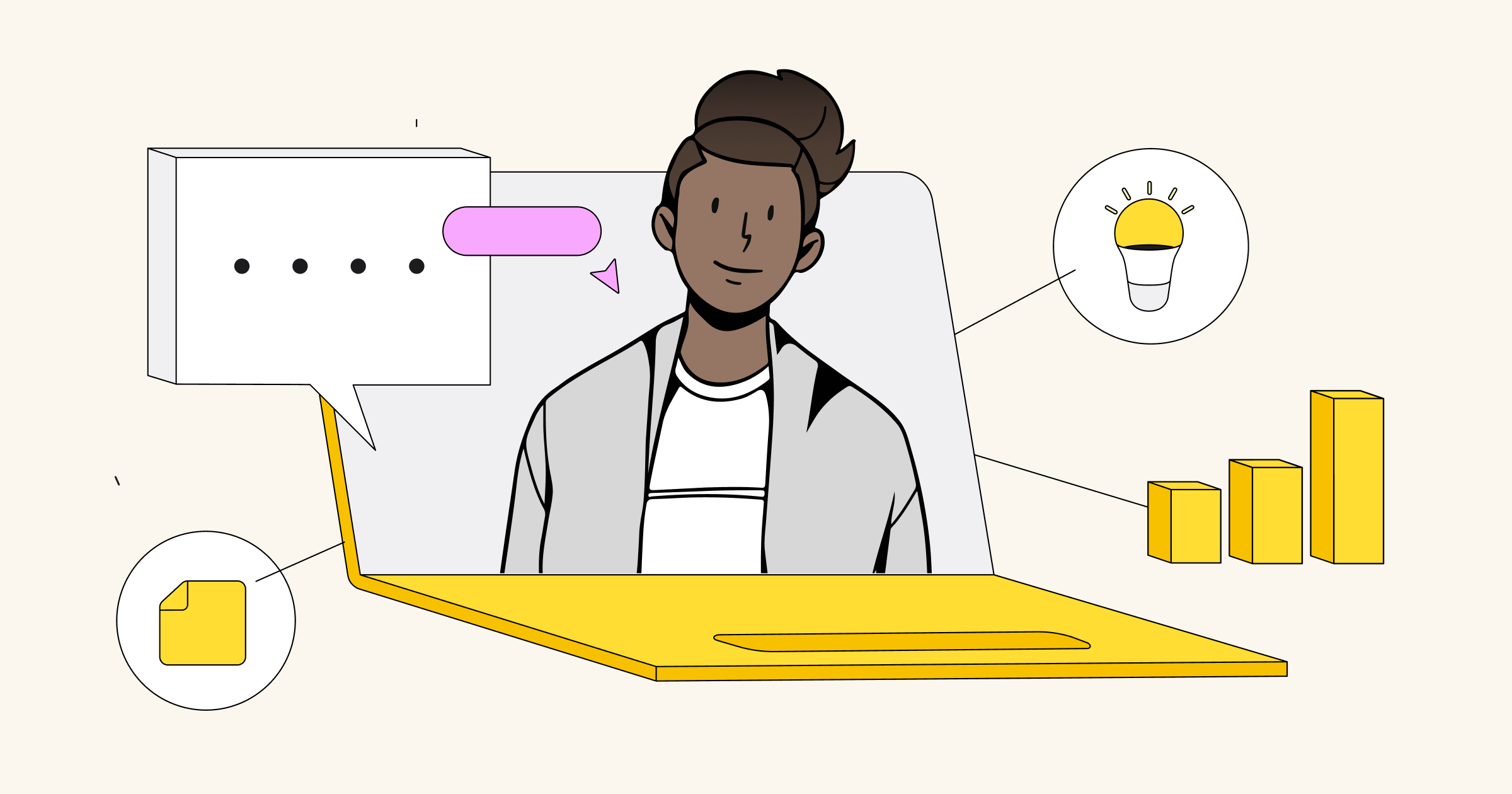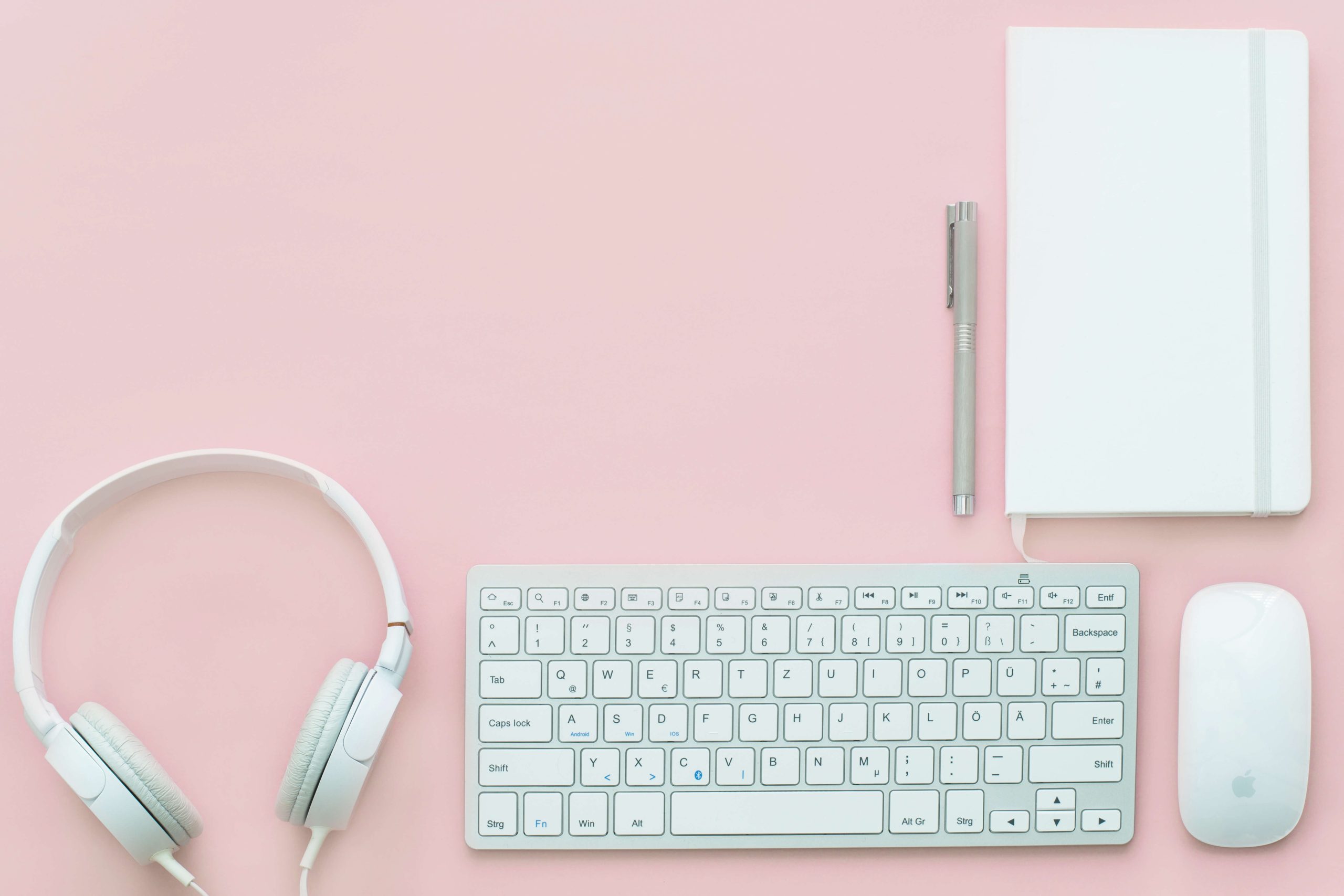Here at Miro, we are passionate about helping other people and companies be more efficient and reach their goals even if they work remotely. Today, we are excited to publish an interview with Laïla von Alvensleben, a UX designer at Hanno and digital nomad who told us about her experience in building successful fully distributed teams.
On remote team culture
We’re a team of remote workers. I’m currently in Paris; some team members are traveling often, others are based in one city most of the time. We come together online to collaborate.
We’ve chosen this kind of work style and lifestyle because we think that people shouldn’t be restricted to a certain place in order to work somewhere.
We think that if people can choose a place where they’re happier, then that’s also going to make them more motivated and committed to come to work.
A lot of people know us for how we work because it’s quite a unique way of working.
LAÏLA VON ALVENSLEBEN, UX Designer
Our team is known for being self-managed, meaning that we’re a flat team and we take decisions in a collaborative way; there’s no hierarchy. We share our processes, our strategy and our roadmap online, on our website and on our blog. We’ve also become a social business.
We do user experience design, but UX design is quite broad. We mainly do research, user testing and prototyping, but we also provide a lot of other services such as web development, product strategy and content strategy. I also give workshops around UX design, design thinking and remote collaboration.
On working with clients remotely
People don’t like meetings in meeting rooms. With us, you can do a video call from the comfort of your own home. We’ve sometimes had clients talking to us and their little kids come and wish them goodnight.
You get to know your clients as human beings, and they get to know us as human beings. We’re not just robots executing what they need.
LAÏLA VON ALVENSLEBEN, UX Designer
We can bring in our engineer and our strategist from anywhere in the world, which brings a special sort of flavor to the project. It’s much more fun, I would say, than to be in a big, empty, sterile meeting room.
If we do need to meet our clients face-to-face, we can rent out really cool places if we want and do whatever we want in those spaces. But that’s generally not how we attract clients. I think the way that we attract clients and get interesting projects is by what we do.
When we get a project, we discuss it with the people on our team who have the skills to do that project. From there, we create smaller teams of two to four people to be on the design sprint.
Many companies contact us, not even because they’ve seen our projects first, but because they’ve read our Playbooks. They read about us and they’re like, “Wow, you guys have a very progressive way of working. It sounds really interesting. I would like to work with you.” We share a lot of things that we’ve been successful at but also things that we haven’t been successful at, and I think that makes us authentic and transparent to our clients.
If we’re not a good fit, it’s not because of our remote aspect. Maybe there’s not a good fit because we don’t have the resources to do what the client expects us to do, or we don’t have the time. And that’s when we have to turn down projects. Or they don’t have the budget; that’s also happened. Which is, I guess, classic for any kind of design team.
On the importance of transparency and authenticity

We’re doing this for ourselves, first and foremost, and I think our clients can get a sense of that, and they want to be a part of that, too. We’re not trying to seduce anyone in any way.
We ask all our clients to read the Hanno Playbook before we sign a contract with them. It explains how we operate, engineer, create, and collaborate.
We’re very transparent about how we work. We share everything on Slack all the time. And we have video calls to talk about our work and use Google Drive to make it easily accessible to the team and the client. We use Slack and Basecamp to communicate with our clients and make sure someone on the client side is always available for us.
Our clients can log in to the Slack team we set up for their project and see what we’re doing, exactly as we’re doing it. By doing that, we gain their trust. We work on client projects in sprints of five days, and clients know that we’re only focusing on their projects.
On the difficulties of remote collaboration
Our backup plan is to always have two people in a call. In my workshops, I always have two facilitators: myself and somebody else. If my connection isn’t good, the other person can take over. That’s more interesting for the participants too, so they don’t have to keep listening to my voice the entire time.
Meetings in real life have many problems too. People are late, you need a room… With remote meetings, people are more reliable about showing up and calling on time.
Can you hear me?” — I feel like the first thing people ask is “Can you hear me? Are you there?” Half of my conversations can be like this depending on the quality of the internet connection and the platform we’re using for video calls.
LAÏLA VON ALVENSLEBEN, UX Designer
Success depends on the team culture more than the industry; not just work culture, but the culture of each participant. People who work in the United States and have only a US-based team tend to share a similar mindset. Once you include Europeans or Asians, you’ll notice more challenges. People think differently and express themselves differently, not only because of their personality, but also because culturally they aren’t on the same page.
I think cultural differences are more challenging than industry differences.
On organizing and facilitating remote meetings
Distraction happens to everyone. It happens to the best of us. We ask participants, “Please shut down any tab, online tool or desktop app that you have open.” People get distracted in real-life meetings as well.
It’s very important to prepare ahead of time for remote collaboration. Before a workshop, we provide all the data and give the participants some homework to do such as ‘fill in the ice-breaker exercise here’ or ‘check out the tutorial videos there.’
I haven’t found the magic trick yet to make sure that everybody reads or does what they’re supposed to do, but I recommend you make it as short as possible, so it’s not long and tedious to read.
Prepping the online space or collaboration tool is critical. I’ll have all these templates on the whiteboard with everything prepared in advance. I’ll make sure that all the participants receive a guide or a pre-workshop document, where they have all the links they need to download the slides and access the templates we made. Now, we have everything ready. And each time, we find a way of improving it.
To increase engagement, ask people to come up with ideas on their own, before the meeting. One thing we’ve noticed is that when you’re all collaborating online at the same time, it takes up a lot of energy. People lose their focus. It’s better to separate, do your own thing individually and then come together and share your ideas.
Not every team works the same, even within the same industry. The process is always evolving.
I believe virtual teaming and remote collaboration can translate to other industries besides tech and design.
LAÏLA VON ALVENSLEBEN, UX Designer
With synchronous collaboration in the same ideation session, everyone can still be heard in a group of three to four. Anything beyond six and you’ll need facilitation and to split people up into groups.
With bigger groups, you require more tools and organization. With Zoom, you can break up large groups into small groups and assign them to virtual rooms. That’s really fun because you mix these people up, and as a facilitator, you can jump from room to room and answer questions; just like you would in a physical space.
On the importance of team building
In the beginning, when I joined the company, we would plan yearly team retreats and focus a lot on improving something internally, like our website or our company vision. During the last two trips, we decided to take it easy, and now we just focus on enjoying ourselves and each other’s presence by doing more relaxed activities together.

We’ve also chosen to meet twice a year, because human bonding and seeing each other face-to-face is so important. That’s when you really get to know people’s personalities more, and you can connect with one another.
Check Miro’s guide to remote team building games and activities.
The last time we met in Sri Lanka, we decided to focus on yoga and surfing. Everybody had to try at least one activity once. I ended up doing yoga and surfing every day, and it was the first time I did something so intense, but it was really good
If you’re always working, even when you see each other, it’s almost a shame.
On the experience of remote work
What I like most about my job is that it’s always different. There’s always something new. Usually our project turnover is pretty fast, and there are a lot of things happening at the same time. I’ve done everything from concept strategy to user research, to user testing, to giving workshops, to meeting people in real life if I have to. It’s just a very fascinating industry to work in.
What I specifically like about Hanno is the flexibility it gives me. Of course, that comes with challenges, like finding good Wi-Fi and a quiet place to work.
Today I’m sitting here. Tomorrow, if I want, I can be in another country.
I want the world to understand that flexible working isn’t a person who goes to a tropical location and works by the poolside.
LAÏLA VON ALVENSLEBEN, UX Designer
Remote work is highly professional; people should realize that actually working by the pool and by the beach is not very convenient. It’s actually frustrating!
Sometimes I miss working in an office. I don’t miss the office, but I can sometimes feel isolated on my own. I don’t always have people to hang out with. But, aside from that, I don’t think anybody has ever thought, “Oh, working outside of an office isn’t a good idea.” At least give it a try.
On the future of remote collaboration and teamwork
A virtual room with sticky notes would be amazing, but maybe it’s not for the immediate future. Sometimes I still can’t even get Wi-Fi to work at home!
I believe the possibilities for augmented reality (AR) for remote collaboration are endless, such as holograms or sound and smell. It’s that kind of AR that can push our imagination and stimulate us to operate in a completely new environment.
I find it disappointing when people say they can’t work the way we dobecause of X, Y, Z reason. They think that it’s never going to work or that it’s only specific to people who work in tech.
My biggest dream is to make this flexible work lifestyle more mainstream.
LAÏLA VON ALVENSLEBEN, UX Designer
Flexible working, I don’t only mean remote work, allows you to choose when to come to your job and when to start and end your work day based on your own needs. You learn a lot about yourself when you work flexibly. If there could be more and more companies allowing their employees to do that, and if there could be more people who have the resources they need and the advice or the counselling they need to do that, then that’s going to make a whole bunch of people in the world happier.
We all spend the majority of our time at work. And I guess this is my dream: let’s reach out to other industries, in health, in the environment, in social work, in politics and in finance, and show them how easy, successful and rewarding it is. My friends who are doctors are like, ‘“What are you talking about?” when I tell them about remote work. I want them to know.
I’d love remote collaboration to become less of a buzzword and more of a reality.
ABOUT THE speaker
Laïla von Alvensleben
Laïla von Alvensleben is a UX designer. She combines design thinking, user research and content strategy to create digital products and services that add value to the people who interact with them. For more updates, you can follow her on LinkedIn or Twitter.
Profile
Hanno
Is a location independent digital design agency that helps socially motivated organizations that want to take on major social problems related to health & wellness.
City: totally remote team.
Clients: Uber, Prepd, Mirror, Stratim, Ava, Zirx




